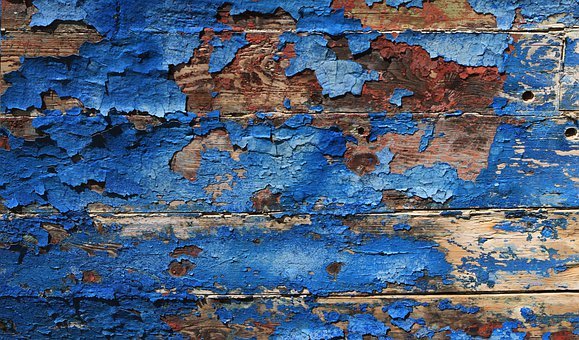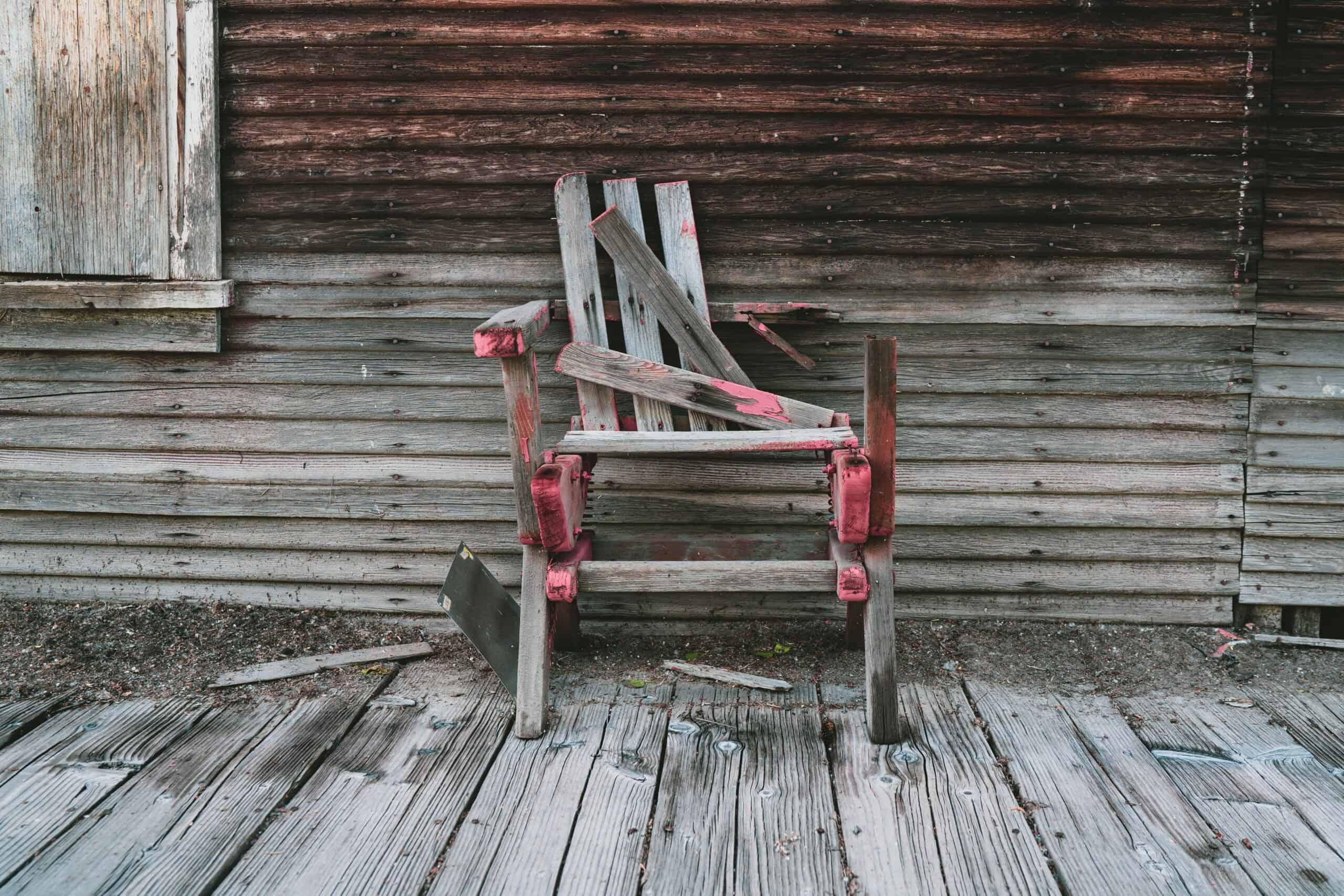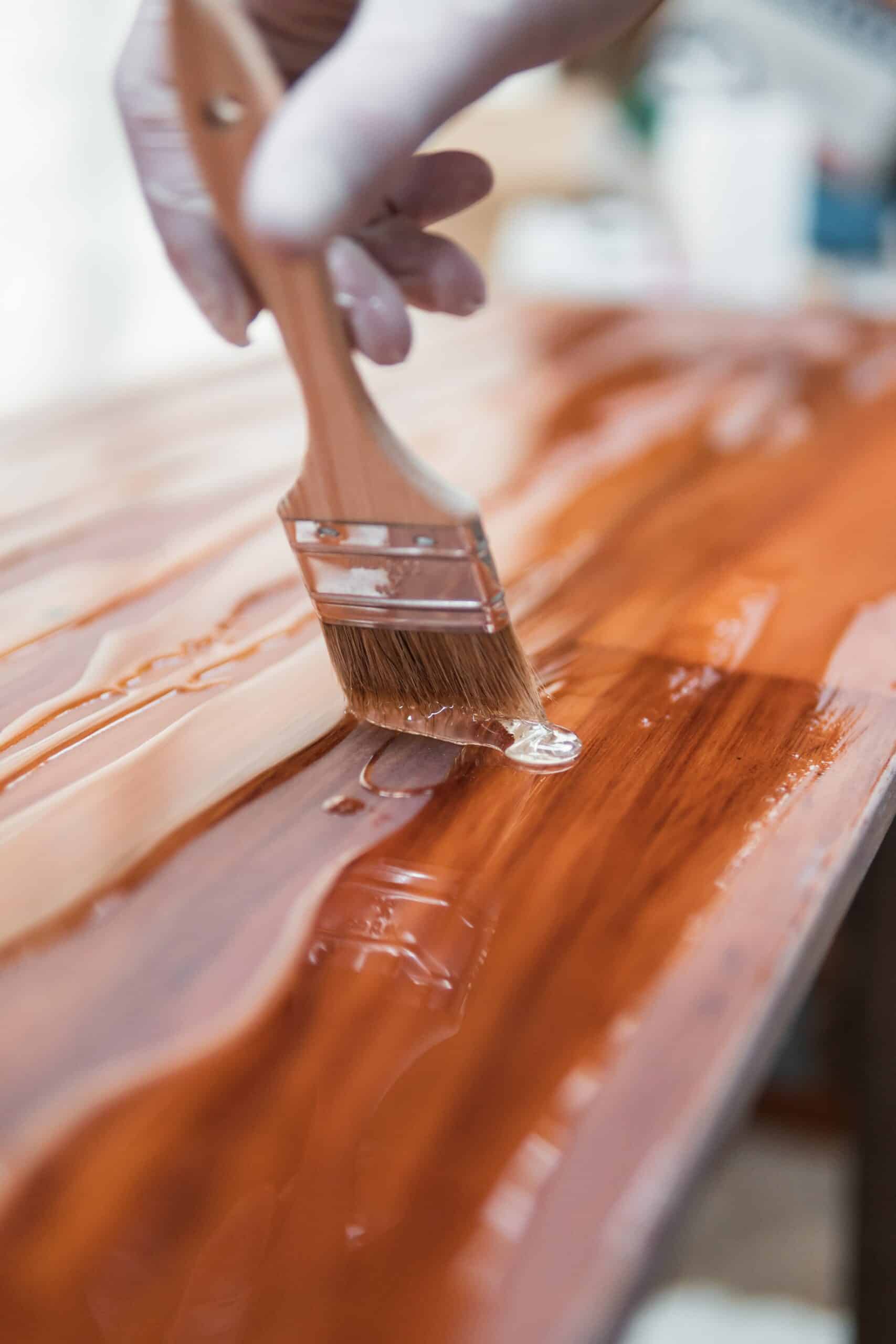How To Remove Acrylic Paint From Wood?
Removing acrylic paint from wood can be a daunting task, like trying to take apart an intricate puzzle without the picture on the box. With so many possible steps and methods of removal, it’s hard to figure out where to start. But don’t worry - I have some tips for you! In this article, we'll discuss how to remove acrylic paint from wood in three easy steps.
First off, let's talk about what kind of materials you need before beginning the process. You'll want gloves (preferably rubber or latex) and goggles to protect yourself against any chemicals that might be involved. Additionally, a variety of cleaning agents including mineral spirits, rubbing alcohol, acetone, or lacquer thinner will come in handy during the removal process.
Finally, let's dive into the details of removing acrylic paint from wood. Whether your goal is complete removal or simply lightening the existing stain, there are several techniques available depending on your desired outcome. We'll go through each step one at a time so you can easily follow along and find success with your project!
How To Remove Acrylic Paint From Wooden Surfaces?
Removing acrylic paint from wooden surfaces can be a tricky task. Fortunately, there are several methods that you can use to take off the unwanted color without damaging your wood furniture or other items. In this article, we'll discuss how to effectively remove acrylic paint using warm water, vegetable oil, and rubbing alcohol.
The first method of removing acrylic paint is with warm water. Simply wet a cloth in some hot water and then wipe down the painted surface gently until it is clean. This will help loosen up any dried paint so that it becomes easier to scrub away. If this doesn’t work, you may need to try a stronger solution like vegetable oil.
Vegetable oil works well for loosening stubborn paint stains because of its oily consistency which helps break down even the toughest paints. Apply a small amount directly onto the stained area and let sit for a few minutes before wiping it off with a damp cloth. For best results, follow up by washing with soap and warm water afterward. Finally, if all else fails, rubbing alcohol can also be used as an effective way to get rid of any remaining traces of acrylic paint on your wooden surfaces.
So whether you're dealing with spills or splatters, these three techniques should provide enough firepower to tackle most painting jobs - no matter what kind of wood surface you have! With just a little bit of elbow grease and patience, you'll soon have your wood looking good as new again.

Different Methods Of Removing Acrylic Paint
Removing acrylic paint from wood surfaces can be like untangling a giant knot. A seemingly simple task that gets more complex the deeper you go into it, and without proper guidance, there is no way to prevent being overwhelmed by the situation. This article will guide you through the different methods of removing acrylic paint so that you can approach this daunting task with poise & confidence.
Firstly, if the acrylic paint on your wooden surface still hasn't dried yet then all you need to do is scrape away as much of it as possible using a spatula or any other tool which has an edge but isn't sharp enough to damage the wood itself. Once most of the paint is removed make sure to clean up any residue left behind with warm water and mild soap.
If however, the acrylic paint has already dried onto your wood surface then fear not! There are several ways in which one can remove dry acrylic paint such as:
- Using chemical removers specifically designed for removing paints
- Sanding the painted area off with sandpaper
- Scraping the area off gently with a razor blade or steel wool
- Using an electric sander or heat gun (not recommended).
In addition to these options, one could also use an organic solvent-based acrylic paint remover, just make sure not to leave it on for too long otherwise it might damage your wood surface.
The procedure may seem overwhelming at first but breaking down this process step by step makes tackling this issue much easier. With careful consideration and following safety precautions while executing each method properly, anyone can get rid of their unwanted acrylic paint stains in no time!
Now let's move forward and explore what is perhaps the best way to remove acrylic paint from wood.
The Best Way To Remove Acrylic Paint From Wood
Removing acrylic paint from wood can be a challenging task. It is important to know the best way that works for your particular wooden surface and project. Let's look at what methods work best when it comes to removing acrylic paint stains from wood.
There are generally two types of approaches to removing acrylic paint from wood: wet or dry methods. The wet method involves using water, detergents, solvents, chemicals, abrasive materials, and heat to break down the paint molecules on a wooden surface. This can be effective but also potentially damaging if not done correctly as these substances may damage or alter the finish of the wood. On the other hand, you have dry methods such as sanding, scraping, and chemical removers which involve carefully and skillfully taking off layers of dried-up paint. These can be labor-intensive but they won’t affect the integrity of your wooden surface like some wet solutions might do.
So which option gives us the best way? In most cases, we recommend going with both options in tandem - use a solvent to soften up any remaining stain before gently sanding away at it until all traces are gone. Doing so should ensure that no further damage is caused to your wooden surface while still making sure all of those pesky acrylic paint stains disappear completely!
While there are many ways available to remove acrylic paints from wood surfaces, careful consideration needs to be taken when deciding on which approach is right for you depending on your specific situation. Special safety precautions must always be taken during this process to keep yourself safe while working with potentially hazardous materials.
Safety Precautions When Removing Acrylic Paint From Wood
Removing acrylic paint from wood can be a tricky task and it’s important to take certain safety precautions. It's best to wear protective gear when trying to remove the paint, such as goggles, gloves, and a face mask, to avoid any potential health risks that come with using harsh chemicals like methylene chloride. Here are 4 items you'll need for removing acrylic paint from wood safely:
- Protective Gear - Goggles, gloves, and a face mask will keep your skin safe from dangerous fumes or splashes of liquid;
- A Power Sander - To help loosen old layers of paint on the surface;
- Methylene Chloride - A chemical used to strip away multiple layers of paint quickly
- Scrubbing Tools - Brushes, rags, and sponges should all be included in your toolkit.
These tools will make sure no harm comes to yourself or the wood while attempting this project. If necessary, you may also want to consider ventilating the area where you're working by opening windows or setting up fans. Taking proper safety measures is crucial before starting work on how to remove acrylic paint from wood.

What Is Needed To Remove Acrylic Paint From Wood?
When it comes to removing acrylic paint from wood, the process can be a bit tricky. Did you know that according to research, over 57% of people have difficulty with this task? To ensure your success in completing this project, there are certain items and steps needed. Here is what you will need:
- A dry cloth for wiping up excess paint
- A plastic scraper for loosening dried-on or stuck-on paint
- Isopropyl alcohol for cleaning off any remaining residue
- An old toothbrush or cotton swab to get into tight corners and cracks
In addition to these supplies, make sure you wear protective gear such as gloves and safety glasses so no chemicals come in contact with your skin or eyes. When using the plastic scraper, take care not to scratch the surface of the wood. By following all the necessary precautions and having the right materials at hand, you can easily remove acrylic paint from wood without much effort. With a few careful steps, your job should be complete in no time!
Cleaning Acrylic Paint From A Hardwood Floor
Have you ever experienced the frustration of trying to clean acrylic paint from a hardwood floor? It can be one of the most challenging cleaning tasks, but it doesn't have to be. Here are four easy steps that will help remove acrylic paint from your hardwood floors:
- Start by dampening a clean cloth with warm water and gently blotting away any excess paint. This should start lifting off some of the acrylic stains without damaging the wood beneath.
- Mix the ammonia solution with baking soda in equal parts and apply this mixture to the affected area. Allow it to sit for 10-15 minutes before scrubbing with a brush or sponge. Rinse off using warm water and repeat if necessary until all traces of the paint have been removed.
- For tougher stains, try applying rubbing alcohol or nail polish remover on a cotton swab. Be sure to use caution as these chemicals may damage certain types of wood finishes. Once again, rinse off with warm water when finished.
If none of the methods work, then you may need to call in professional cleaners who specialize in removing stubborn stains such as acrylic paint from hardwood floors. They have access to more powerful solutions that can handle even the toughest jobs!
With patience and persistence, removing acrylic paint from hardwood floors is possible - no matter how daunting the task may seem. Now let's move on to discussing how we can tackle getting rid of those pesky spots on wooden furniture.
Removing Acrylic Paint From Wooden Furniture
Removing acrylic paint from wooden furniture can seem like a daunting task, but it doesn't have to be. With the right concept and plan of attack, you can make quick work of this tedious job. Let's dive in and get that furniture looking fresh again!
Like peeling an onion layer by layer, removing wet acrylic paint from wood requires patience as well as the knowledge of which products will help you do the job properly. Paint thinner is often used for cleaning up dried - on oil or latex paints, however, special consideration should be taken when using it on any type of wood surface - test out in an inconspicuous area first. If your painted surface is already dry and hardened then sanding would be necessary before applying any other method of removal.
When dealing with stubborn spots, different types of paint strippers may come into play depending on how long the paint has been sitting on the wood. Be sure to take appropriate safety measures such as wearing gloves and ensuring proper ventilation while using these solvents. Now that we know what it takes to remove acrylic paint from wooden furniture, let's explore ways to tackle nail polish remover.
Nail Polish Remover For Removing Acrylic Paint From Wood
Did you know that nearly 79% of people who paint their furniture regret it within a few weeks? If your wooden furniture is covered in dried acrylic paint, nail polish remover can be an effective way to remove it. Here are some tips on how to use this method and what else you should keep in mind when removing acrylic paint from wood:
Preparing the Area: Before getting started, make sure the room has proper ventilation and wear protective gear such as goggles and gloves. Test any nail polish remover on a small spot first before using it on the entire piece of furniture.
- Sub list 1: Use Nail Polish Remover for Acrylic Paint Removal: Soak a cotton ball with nail polish remover and press it onto the area that needs to be cleaned. This helps break down the paint so that it’s easier to scrape off without damaging the wood surface beneath. Make sure to not let the solution sit too long as this could cause damage.
- Sub list 2: Other Methods For Paint Removal: In addition to using nail polish remover, there are other methods available for removing paint like chemical strippers or sanding techniques. Consider these options depending on what type of painted finish you have and if they will work better than nail polish remover.
No matter which removal technique is used, remember to always exercise caution while cleaning acrylic paint from wooden surfaces. It's best to test out each method on a smaller section first before applying it over larger areas - this ensures that no permanent damage is done during the process.

Chemical Paint Strippers For Removing Acrylic Paint From Wood
Removing acrylic paint from wood can be a tricky task, like threading a needle in the dark. Chemical paint strippers are among the most effective methods of getting rid of this type of paint without damaging the underlying surface. These chemical products contain an acrylic polymer that softens and dissolves the dried-on paints, allowing them to easily come away from surfaces such as wood.
In addition to chemical paint strippers, lacquer thinners can also be used for removing acrylic paints from wood. The thinner is applied directly onto the area where it will penetrate deep into the layers of paint and break down its bond with the material below. The result is that it quickly removes all traces of old coats of colors while leaving behind an unblemished wooden surface. This method works best when dealing with smaller areas or minor touch-ups on already-painted furniture pieces.
However, although these chemicals do their job well when tackling small areas, they might not always be practical for larger projects due to their strong odors and potential health hazards associated with using them in enclosed spaces. To get around this problem one could opt for using a heat gun instead which offers some advantages over traditional stripping techniques while being much safer to use than harsh chemicals.
The Use Of A Heat Gun For Removing Acrylic Paint From Wood
I'm here to talk about the use of a heat gun for removing acrylic paint from wood. Heat guns are great tools that can be used in many scenarios, including this one! They work by using hot air to soften and loosen up the paint so it can more easily be removed with other methods. While some may opt for pressure washers or denatured alcohol, I find that a trusty heat gun does the job just fine.
Using a heat gun is quite easy - all you need to do is point the nozzle at your painted surface, turn on the device, and move it around until you've covered the whole area. You'll want to make sure not to get too close as high temperatures could damage the wood's finish. It only takes a few minutes for most layers of paint to become softened and ready for removal.
Once you have heated your surface, use something like a putty knife or scraper tool to carefully remove any remaining bits of paint. With enough patience and care, you should eventually be able to restore your wooden piece to its original state without causing any further damage. And there you have it - an effective way of removing acrylic paint from wood via a heat gun!
Now let's explore another option when it comes to tackling this task: water.
Removing Acrylic Paint From Wood With Water
Removing acrylic paint from wood with water is the most popular way of getting rid of dried acrylic paint. Statistics show that over 75% of people prefer to use this method. It's easy for anyone to do - all you need is a washing machine and some dish soap!
Before beginning, it's important to make sure that the area where you are removing the paint has been thoroughly cleaned. This will prevent any further damage or staining caused by residue left behind after the process. To begin, fill your washing machine with warm water and add a few drops of mild dish soap. Gently place the affected item inside and let it run through its cycle. When finished, take out the item and check if there are still traces of paint on the surface; if so, repeat these steps until they have completely disappeared.
If you don't have access to a washing machine, an alternative would be to mix a solution of hot water and some dish soap in a bucket or basin and gently scrub away at the area with a soft cloth or sponge until all traces of paint are gone.
Removing Acrylic Paint From Wood With Isopropyl Alcohol
Tackling a tough task, like removing acrylic paint from wood with isopropyl alcohol can feel like an uphill battle. But with the right tools and know-how, you'll be ready to take it on in no time - just like climbing a mountain!
Here's what you need for success:
- Isopropyl Alcohol
- A cloth or sponge
- Gloves
Start by pouring small amounts of isopropyl alcohol onto the stained area until the fabric is damp but not saturated. Use a clean cloth or sponge to gently rub the stain away in circular motions. Be sure to wear gloves as isopropyl alcohol can cause skin irritation. Once all of the acrylic paint has been removed, use warm water and soap to wash off any remaining residue and dry thoroughly.
The next step in this process? Removing acrylic paint from wood with methylene chloride – let’s get started!
Removing Acrylic Paint From Wood With Methylene Chloride
Removing acrylic paint from wood with methylene chloride is like filing away a stain. It takes time, precision, and the right tools to do it correctly. Here are three things you'll need:
- Methylene chloride-based paint removing solvents
- Protective equipment, such as safety glasses and gloves
- A stable surface for working on that won't be damaged by the solvent.
When using methylene chloride, always work in well-ventilated areas or outdoors. Make sure to wear protective clothing, including long sleeves and pants, and use either a face mask or respirator so you don't inhale any fumes. Start by dipping your brush into the solvent, then carefully apply it to the affected area of wood where there's acrylic paint present. Leave it on for several minutes before wiping off any excess with a soft cloth. Repeat until all traces of paint have been removed.
It’s important not to leave the solvent on the wood too long – otherwise, it might cause damage to its finish or discoloration to its surface. Take caution when handling methylene chloride-based products as they can irritate skin and eyes if splashed directly onto them. Ensure that you read all instructions before use so that you know how best to safely remove paints from wood surfaces while minimizing potential harm to yourself and others in the vicinity. From here we move on to dealing with excess acrylic paint still left on the wood after removal efforts have been made.

Removing Excess Acrylic Paint From Wood
Removing excess acrylic paint from wood can be a tricky task. It's important to act quickly and use the right supplies so that you don't ruin your wooden surface. Fortunately, there are some steps you can take to get rid of those pesky paint bubbles effectively.
To begin with, grab a paper towel and a plastic putty knife. Carefully scrape away any dried paint on the wood using the edge of the putty knife. Be sure not to dig into the wood too deeply; just enough so that most of the excess paint is gone. Once completed, use the paper towel to wipe away any remaining bits of paint residue left behind by the putty knife.
Use soap and water or a gentle cleaner specifically designed for wooden items to completely remove all traces of paint from your wood surfaces. You may need to repeat this process several times until all evidence of acrylic paint is gone from your furniture or cabinetry.
It's essential to take precautions when painting on wood so that these types of stains don't occur in the first place - but if they do happen, now you know how to tackle them!
Taking The Necessary Steps To Prevent Acrylic Paint Stains On Wood
Painting wooden furniture with acrylic paints can be a great way to transform the look of your home. However, if you're not careful, it could also leave behind ugly stains on the wood that is difficult to remove. To avoid this problem, there are certain steps you should take when using acrylic paint on wood surfaces.
First and foremost, you'll want to make sure that any excess paint is wiped off as quickly as possible. By doing so, you can prevent the paint from drying too deeply into the grain of the wood and becoming harder to remove. This can be done by simply wiping away any wet paint with a damp cloth or paper towel before it has time to dry completely. Additionally, hot water can help speed up this process and dissolve more stubborn layers of dried-on paint.
Taking these precautionary measures will go a long way in preventing unwanted stains associated with acrylic painting on wood. So next time you decide to spruce up your wooden furniture with an acrylic painting project, keep these tips in mind - they might just save you some headaches!
Conclusion
In conclusion, removing acrylic paint from wood is not an easy task. However, with the right tools and steps, it can be done safely and effectively. The best way to remove acrylic paint from wood is by using a combination of isopropyl alcohol or methylene chloride depending on the severity of the stain. It's important to use safety precautions when doing this, such as wearing gloves, eye protection, and long-sleeved clothing. Taking the necessary steps to prevent stains in the future will also help keep wooden surfaces looking their best for years to come.
Finally, remember that taking your time and being patient are essential when trying to get rid of stubborn paint stains on wood. Don't rush through it - take one step at a time so you don't end up making matters worse! That said, there’s no need to fear; if you follow these guidelines carefully then you should have no problem getting rid of any pesky acrylic paints plaguing your furniture. So go ahead – get out those rags and start scrubbing!






